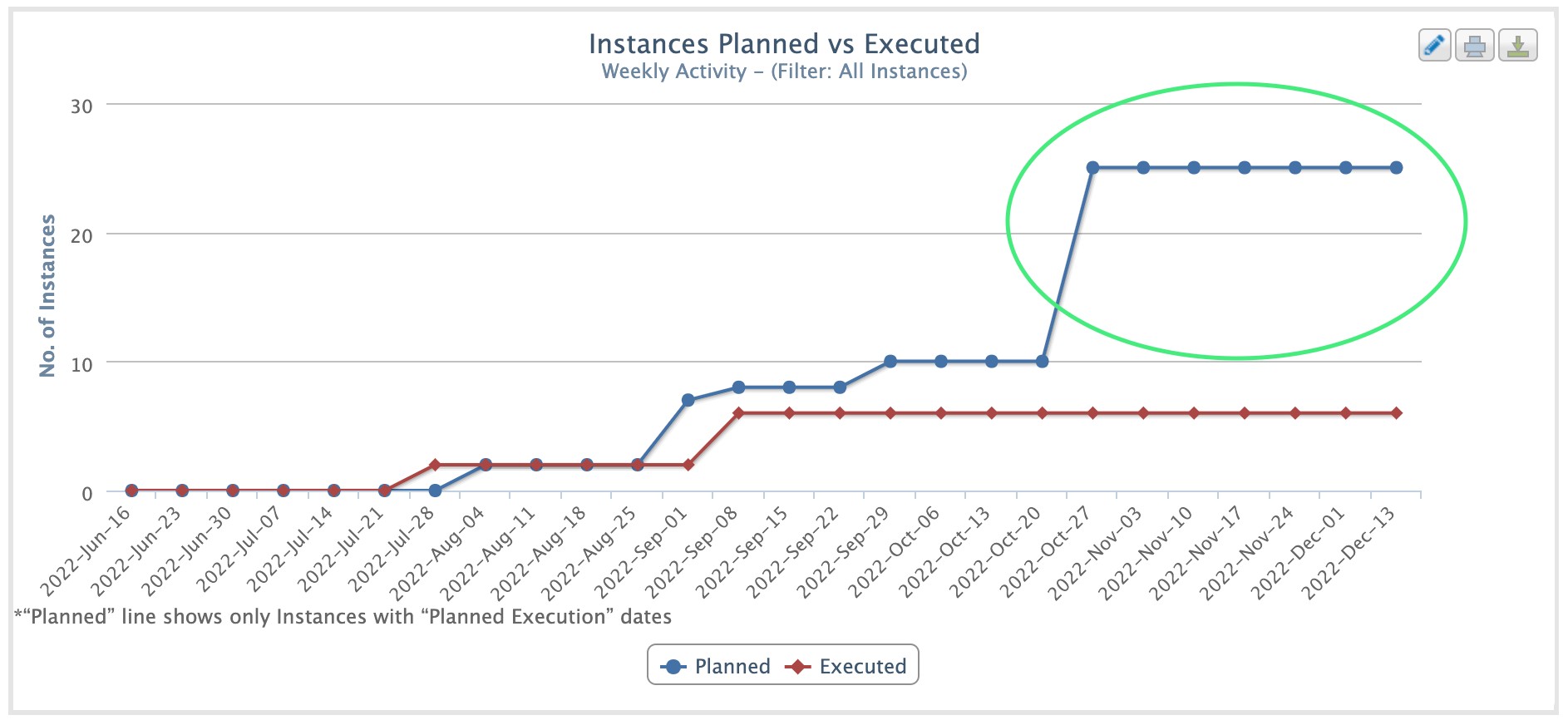How to Address Software Testing Bottlenecks
In This blog
Every project involves a range of inner processes that work together to ensure the project’s success and the achievement of its goals. Developing new software is no exception. In fact, it can be quite complex due to the many technical aspects, a diverse team of people, and the need to meet changing user demands. Among these processes, one of the most vital in software development is software testing.
However, because software testing is a complex process in itself, it often has various obstacles that QA teams need to successfully overcome. These challenges, known as bottlenecks, can impact and slow the entire software development process. In this article, we’ll delve into the reasons behind these bottlenecks and suggest ways to overcome and prevent them.

Understanding Software Testing Processes
In modern software development methodologies, in organizations that follow agile principles, the mantra is clear: release faster and deliver better. This has revolutionized quality assurance, as it is now an integral role that is performed in parallel to the development process in early stages rather than a separate stage of the software development life cycle. Just as development is an ongoing process of maintaining and updating software even after its release, so is the testing process that validates there are no regressions or new defects.
-
Speed and Quality: In a contemporary agile environment, the push for quicker releases is relentless. The emphasis lies not only on speed, but also on the delivery of products that are high-quality to meet end-user needs. As a result, software testing, once a mere gatekeeper, now stands as a sentinel ensuring that every stride toward rapid deployment maintains a high standard of quality.
-
Diverse Staff Members: In the past, software testing was an exclusive territory solely reserved for QA experts. But in recent years, testing has become a more collaborative effort, where staff from different departments relate and execute tests. Among them, you may find developers, product owners, and even end-users. The process no longer resides in the shadows, but rather thrives in collaboration, where both the technically adept and the uninitiated contribute their insights to deliver a better product together.
-
Multiple Tools: QA teams need to work with a wide arsenal of tools designed to make their work more efficient. From bug trackers to testing documentation, automation tools, and internal communication systems, testers rely on software solutions during their day-to-day tasks. Each tool serves a specific purpose and contributes to streamlining the testing workflow, but managing them all effectively requires coordination and a deep understanding of their functionalities.
What Are Software Testing Bottlenecks?
Software testing bottlenecks, at their core, represent points of congestion or obstruction within the testing process. They hinder the efficient execution of testing activities and can negatively impact crucial projects, such as release delays to less quality testing, and lower quality software. These bottlenecks can be seen as performance inhibitors, disrupting the otherwise smooth flow of testing procedures.
Bottlenecks can take on different forms. Some might result from resource limitations such as budget shortages, or not enough skilled testers within the team. Others might be caused by inefficient processes such as a lack of organization and control over testing data. Communication gaps between team members could also contribute to team bottlenecks occuring in the middle of a project, which may cause misalignment.
Identifying Software Testing Bottlenecks
Identifying bottlenecks in software testing is a crucial step towards optimizing the testing process. By gaining insights into the specific areas that contribute to delays, inefficiencies, or quality problems, development teams can implement targeted solutions to overcome them.
In this section, we will explore various methods for recognizing and analyzing software testing bottlenecks.
Pinpointing bottlenecks early in the testing process is important in order to avoid damage to the project. There are two main areas where QA managers and test leads could find bottlenecks:
-
Effective Communication: The most valuable resource managers have is their own team members who are the “boots on the ground” of any project. They often notice if there are any bottlenecks. While managers oversee the process at a higher perspective, it is the testers who actually perform tasks at a more granular, detailed level. Developers, product managers, and stakeholders can also provide a unique point of view in the testing process. Managers should conduct regular team and one-on-one meetings, providing employees with a place to give feedback and raise the flag when needed. By fostering an open communication channel and safe environment, managers can leverage team members’ feedback and identify minor bottlenecks before they become a major concern.
-
Analysis and Measurement: Mapping out the entire testing process and analyzing it in detail can help uncover bottlenecks. The analysis should include different aspects of the testing process including team members and their tasks, testing data, tools, etc. Once mapped out, go and measure QA work to understand if there are any patterns or weak areas that may not be working as expected. For instance, examining a graph comparing “planned versus executed” tasks can assist team leaders in understanding whether the team successfully completed the intended tests during a specific timeframe or if any tests were overlooked.

3 Common Bottlenecks in Your Process
Here are 3 common bottlenecks and simple things you should avoid doing in your testing process:
Giving Up on Developers
Excluding developers from your testing efforts can cause serious bottlenecks. Developers offer a unique perspective of the technical side, beyond simply coding. They can test their own work, review other developers’ code, and execute comprehensive unit testing before moving software pieces to testers. Besides boosting code quality, it also helps catch bugs earlier, reducing the chance of them escaping into production and the costs of fixing them.
Teaching programmers about testing closes a gap between QA and development. It also enhances teamwork. When programmers get involved in testing, it creates an environment where everyone is dedicated to quality, which makes finding bugs faster and deepens everyone’s understanding of the software. The outcome? Testing becomes smoother, with diverse insights improving software quality for users.
Zero to Limited Automation
Organizations that haven’t embraced automation or use it on a limited scale unintentionally put the brakes on their own software testing process. Automation accelerates the delivery of top-notch software releases and can perform complex tests significantly faster than by manual methods. This not only shortens testing time, but also reduces the chance of human errors, making these tools more reliable and producing precise results faster. Adopting automation testing can also free your testers to focus on other important tasks that require their human skills, such as exploratory tests.
Lack of Visibility, Traceability, and Efficiency
In the world of software testing, not having clear visibility, traceability, and operational efficiency can slow things down. When companies spread testing processes across multiple tools, it becomes difficult to keep things organized and effective. This gets worse if they’re using legacy tools or makeshift solutions like spreadsheets that lack essential features for managing test cases, bugs, and executions. These outdated tools can’t unify everything together, which can lead to incomplete, confusing workflows and inefficient collaboration between testers and other team members.
The ideal solution to this challenge is implementing a dedicated test management platform. Unlike other tools, these platforms are exclusively designed for QA and software testing. They effectively organize testing tasks, serving as a centralized hub for managing test cases, tracking bugs, and monitoring execution. They can generate comprehensive reports and real-time dashboards that boost transparency and traceability for both testers and managers, helping them make informed strategic decisions. With powerful integration capabilities, test management platforms enable teams to connect various tools such as bug trackers and automation, resulting in a single source of truth that unifies all testing-related activities together.
Conclusions
Identifying and eliminating bottlenecks is crucial in the rapidly evolving field of software testing, where both efficiency and quality are critical. Whether caused by resource limitations, inefficient processes, lack of collaboration, or outdated tools, bottlenecks can impede progress and compromise software excellence.
However, embracing automation, involving developers in testing, and adopting a dedicated test management platform like PractiTest can unlock a new level of testing efficiency, accuracy, and teamwork. Teams can create a route to more efficient operations, improved product quality, and the achievement of fast, high-quality software releases required by today’s ever-growing customer expectations.























